

Hi Everybody!! You are going to Love this Post, so come on in and get ready to Blast Off. I am so excited to have stumbled on this Great Vid!! When You visit the You Tube site and watch a video, on the right of the page other videos are listed that are connected to the video you are viewing! I look at some just to check them out. That is how I found this wonderful Trip Video to the 7 Wonders of the Solar System!!!!!
So find You the comfy chair and turn the phone off. Take a Personal Time Out just for You and let's go Flying Through Space to see what we can see!!! Enjoy!!



The Universe: 7 Wonders of the Solar System 3D
(TV) (2010)http://www.blu-ray.com/movies/The-Universe-7-Wonders-of-the-Solar-System-3D-Blu-ray/17444/
All five episodes from the BBC documentary science series presented by Professor Brian Cox. Whether it's Saturn's rings, the solar flares of the Sun or the deserts of Mars, Professor Cox demonstrates how the forces that shaped our world are also responsible for creating some of the most breathtaking sights in our solar system.
For more about The Universe: 7 Wonders of the Solar System 3D and The Universe: 7 Wonders of the Solar System 3D Blu-ray release, see The Universe: 7 Wonders of the Solar System 3D Blu-ray Review
The Universe: 7 Wonders of the Solar System 3D Blu-ray, Video Quality
http://www.imdb.com/title/tt1699090/
The Universe: Season 5, Episode 17 Wonders of the Solar System(29 Jul. 2010)
The seven wonder of our solar system are discussed: Enceladus' geysers, Rings of Saturn, Jupiter's Great Red Spot, the Asteroid Belt, Mars' Olympus Mons, the Surface of the Sun, and planet Earth.
Stars:Laura Danly, Alex Filippenko and Clifford Johnson |
« Previous Episode | 57 of 78 Episodes | Next Episode »
Edit
Cast
| Episode credited cast: | |||
| Laura Danly | ... |
Herself
| |
| Alex Filippenko | ... |
Himself
| |
| Clifford Johnson | ... |
Himself
| |
| Greg Laughlin | ... |
Himself
| |
| Amy Mainzer | ... |
Herself
| |
| Erik Thompson | ... |
Himself - Narrator
| |
Storyline
The seven wonder of our solar system are discussed: Enceladus' geysers, Rings of Saturn, Jupiter's Great Red Spot, the Asteroid Belt, Mars' Olympus Mons, the Surface of the Sun, and planet Earth
Feature Presentation:
7 Wonders of the Solar System
...this is brendasue signing off from Rainbow Creek.
See You Next Time! Love Ya!
Of course, one more Great Performance!
Just Push Play
Solar System
From Wikipedia, the free encyclopedia
The Solar System[a] consists of the Sun and theastronomical objects gravitationally bound in orbit around it, all of which formed from the collapse of a giant molecular cloudapproximately 4.6 billion years ago. The vast majority of the system's mass is in the Sun. Of the many objects that orbitthe Sun, most of the mass is contained within eight relatively solitary planets[e] whose orbits are almost circular and lie within a nearly flat disc called the ecliptic plane. The four smaller inner planets, Mercury, Venus, Earth and Mars, also called the terrestrial planets, are primarily composed of rock and metal. The four outer planets, the gas giants, are substantially more massive than the terrestrials. The two largest, Jupiter and Saturn, are composed mainly of hydrogen and helium; the two outermost planets, Uranus and Neptune, are composed largely of ices, such as water, ammonia andmethane, and are often referred to separately as "ice giants".
The Solar System is also home to a number of regions populated by smaller objects. The asteroid belt, which lies between Mars and Jupiter, is similar to the terrestrial planets as it is composed mainly of rock and metal. Beyond Neptune's orbit lie the Kuiper belt and scattered disc; linked populations of trans-Neptunian objectscomposed mostly of ices such as water, ammonia and methane. Within these populations, five individual objects, Ceres, Pluto, Haumea, Makemake and Eris, are recognized to be large enough to have been rounded by their own gravity, and are thus termed dwarf planets.[e] In addition to thousands of small bodies[e] in those two regions, several dozen of which are considered dwarf-planet candidates, various other small body populations including comets, centaurs and interplanetary dust freely travel between regions. Six of the planets and three of the dwarf planets are orbited by natural satellites,[b] usually termed "moons" after Earth's Moon. Each of the outer planets is encircled by planetary rings of dust and other particles.
The solar wind, a flow of plasma from the Sun, creates a bubble in the interstellar medium known as the heliosphere, which extends out to the edge of the scattered disc. The Oort cloud, which is believed to be the source for long-period comets, may also exist at a distance roughly a thousand times further than the heliosphere. The heliopause is the point at which pressure from the solar wind is equal to the opposing pressure of interstellar wind. The Solar System is located within one of the outer arms of Milky Way galaxy, which contains about 200 billion stars
Discovery and exploration
Main article: Discovery and exploration of the Solar System
For many thousands of years, humanity, with a few notable exceptions, did not recognize the existence of the Solar System. People believed the Earth to be stationary at the centre of the universe and categorically different from the divine or ethereal objects that moved through the sky. Although the Greek philosopher Aristarchus of Samos had speculated on a heliocentric reordering of the cosmos,[1]Nicolaus Copernicus was the first to develop a mathematically predictive heliocentric system.[2] His 17th-century successors, Galileo Galilei, Johannes Kepler and Isaac Newton, developed an understanding of physics that led to the gradual acceptance of the idea that the Earth moves around the Sun and that the planets are governed by the same physical laws that governed the Earth. Additionally, the invention of the telescope led to the discovery of further planets and moons. In more recent times, improvements in the telescope and the use of unmanned spacecraft have enabled the investigation of geological phenomena such as mountains and craters, and seasonal meteorological phenomena such as clouds, dust storms and ice caps on the other planets.


Visual summary
A sampling of closely imaged Solar System bodies, selected for size and detail and sorted by volume. The Sun is approximately 10,000 times larger than, and 41 trillion times the volume of, the smallest object shown (Prometheus). Other lists include: List of Solar System objects by size, List of natural satellites, List of minor planets, and Lists of comets.
O+O





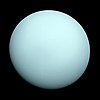
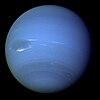




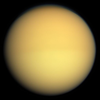


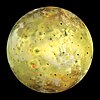

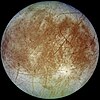




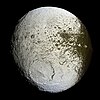





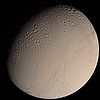


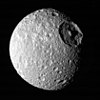






No comments:
Post a Comment
Hi Everybody! Please say hello and follow so I know you are here! Due to the inconsideration of people trying to put commercials on my blog comment area, I have restricted use of anonymous posts. Sorry that some hurt all.
My public email is katescabin@gmail.com No spammers or trolls